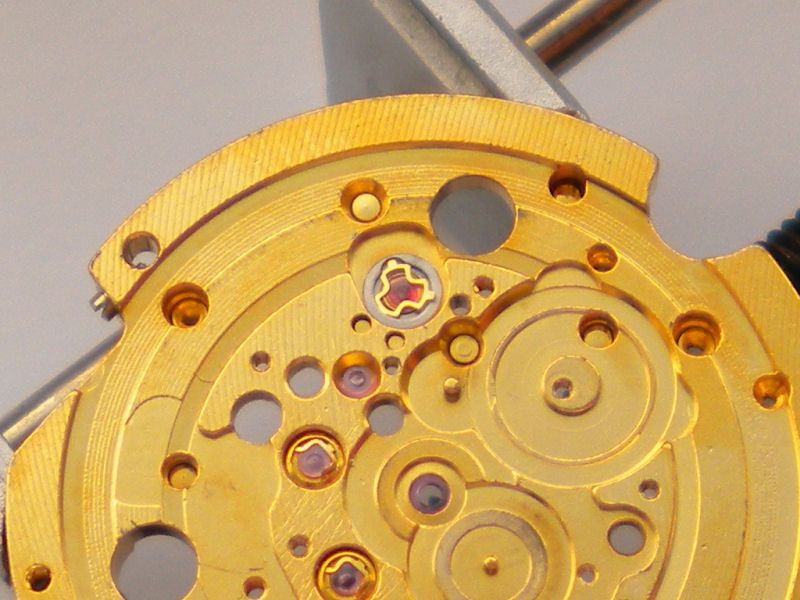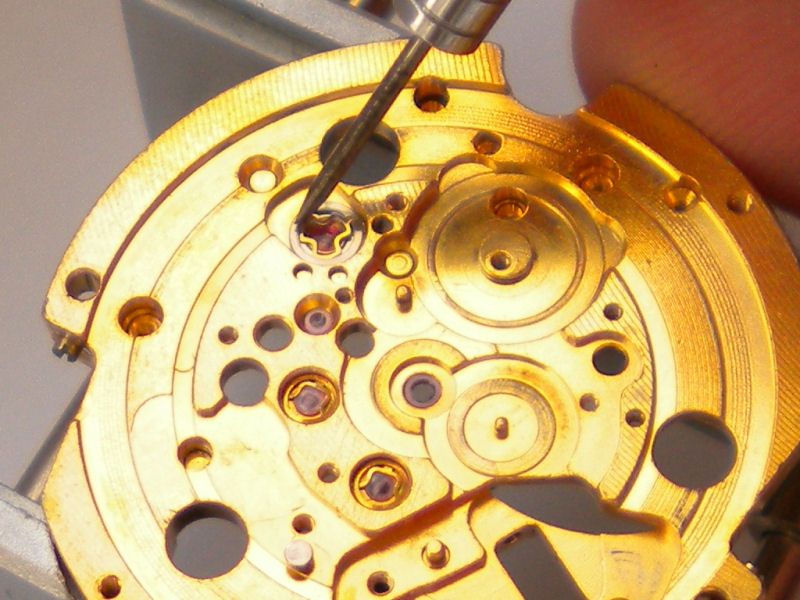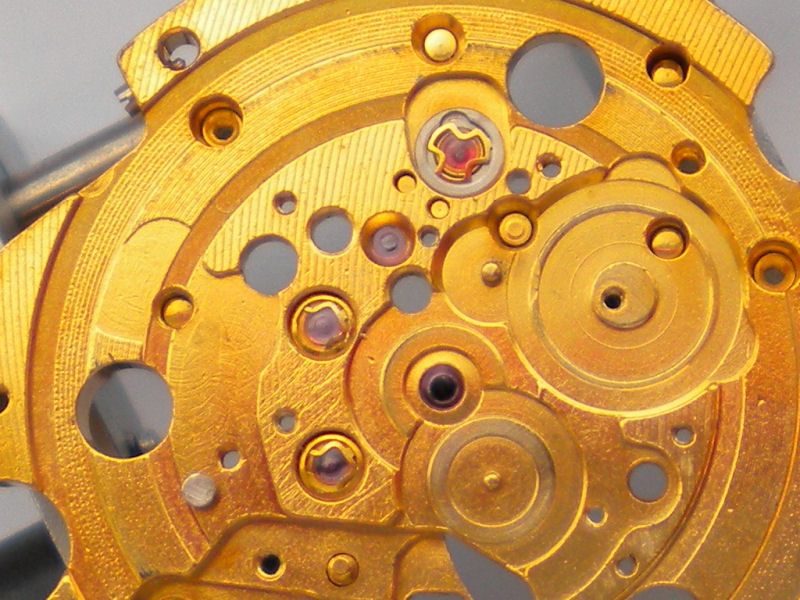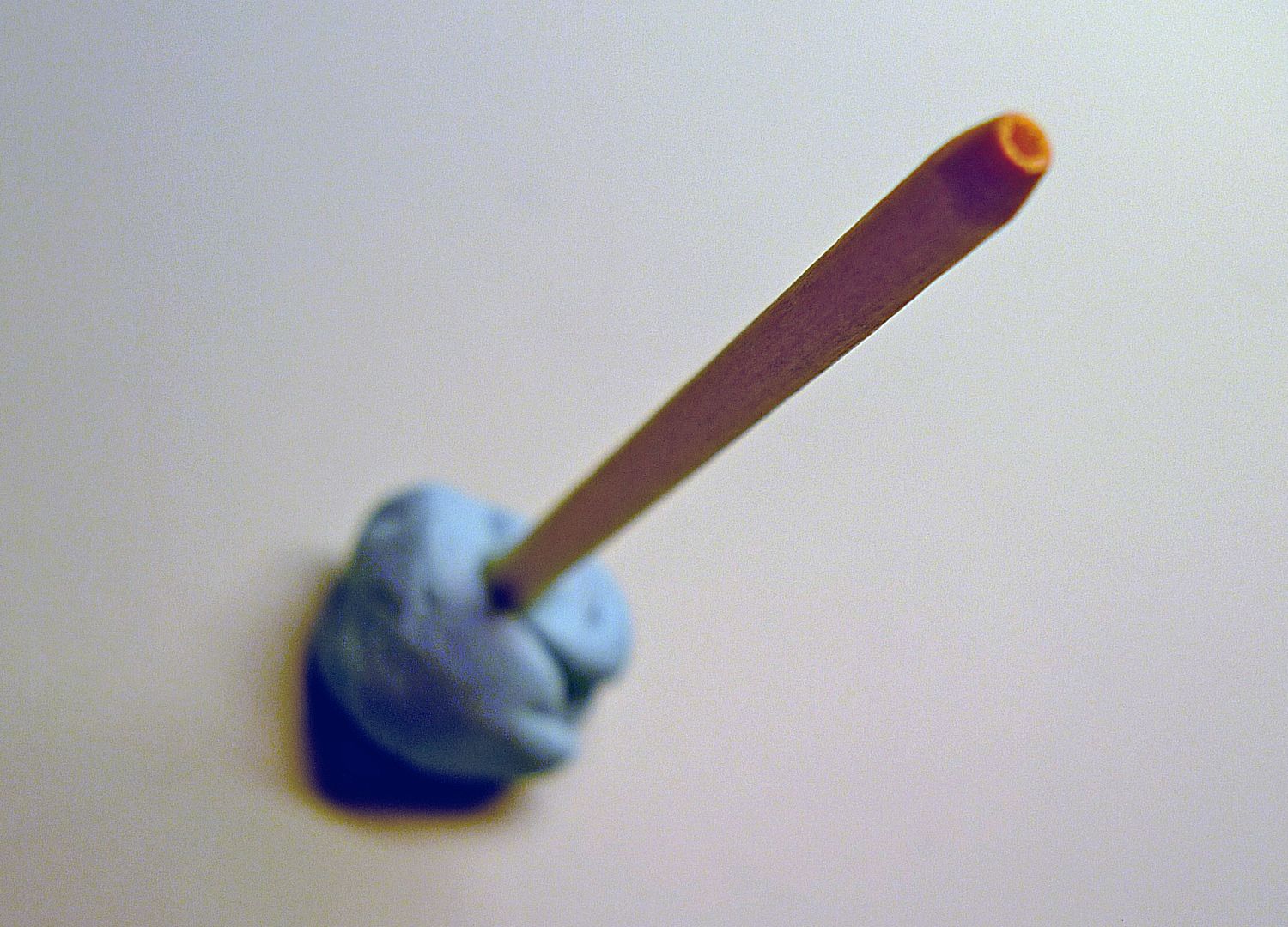Continued....
The groove in this housing is similar to the diafix ones, but it has a crucial difference, there is a small cutaway point that allows the spring tabs to be located into the groove one at a time. The first tab can just be tucked under the groove but the second one has to be rotated until it's located over the cutout.
It can then be depressed and rotated with a very fine screwdriver tip until the third tab is over the cutout.
The last tab can then be depressed and rotated until all three ends are located in the groove.
I find refitting these jewel caps the trickiest part of rebuilding a movement, but I have a system in place now that is quite successful. When I first started I was losing caps and springs like there was no tomorrow. I hope you found this interesting and once again, apologies for the poor pictures. I really need a more capable camera!





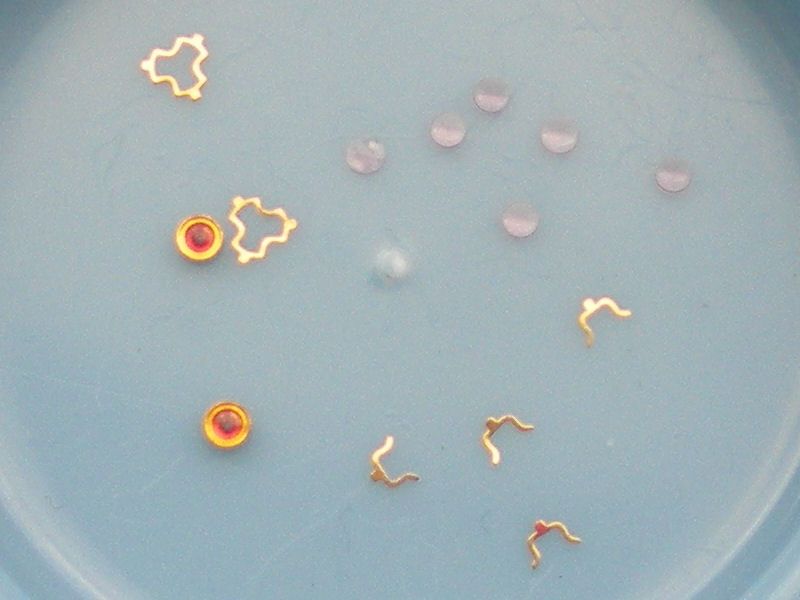
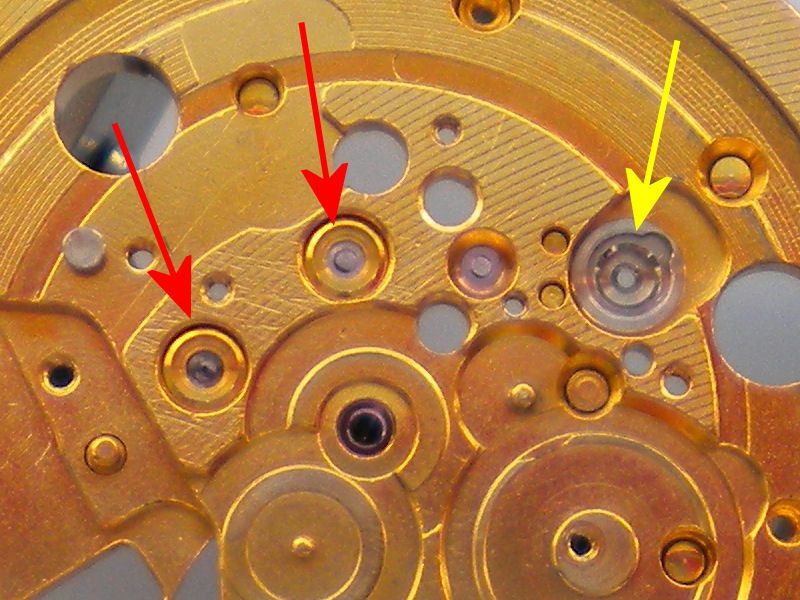

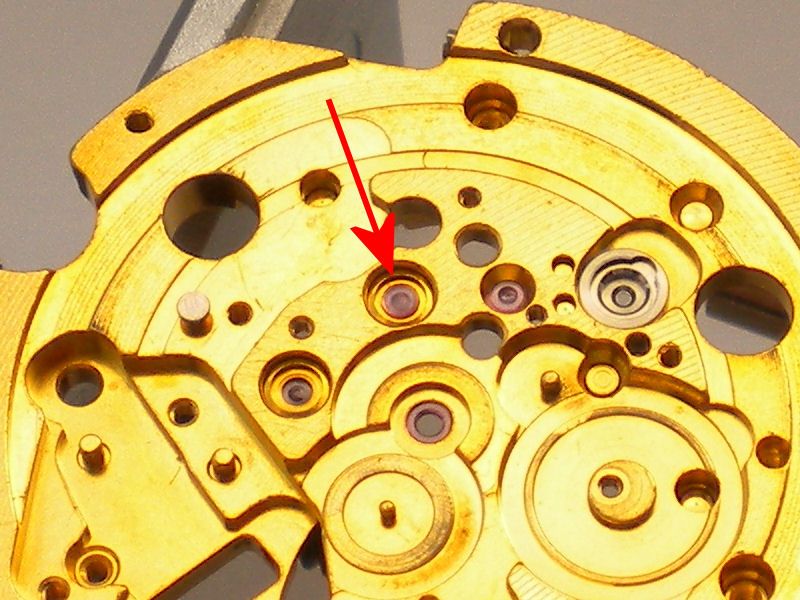
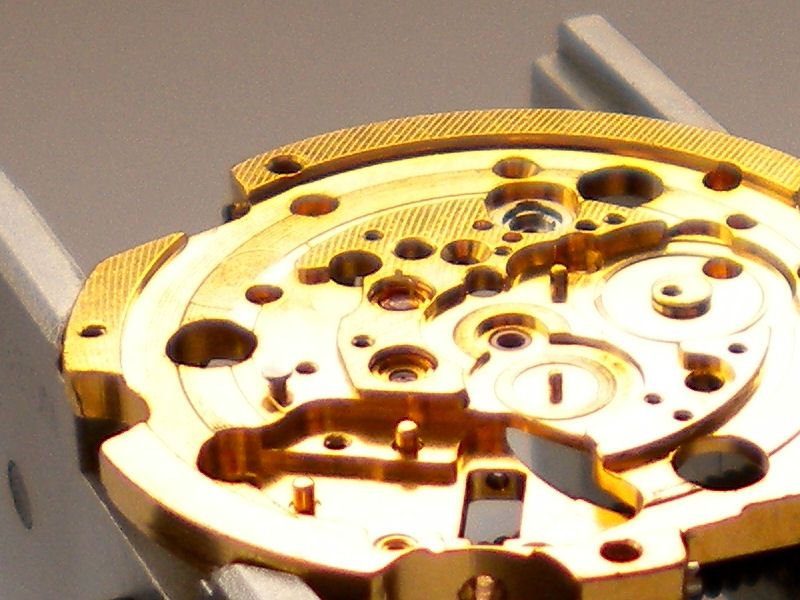
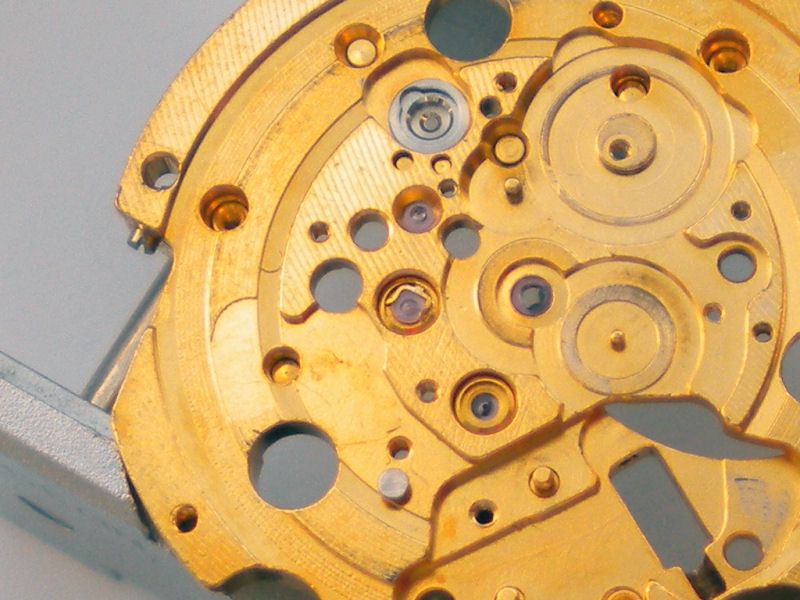
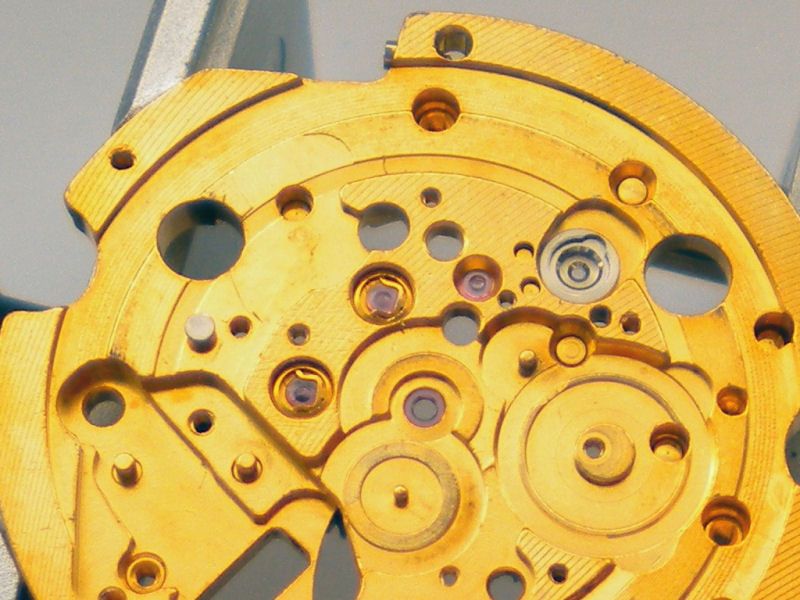
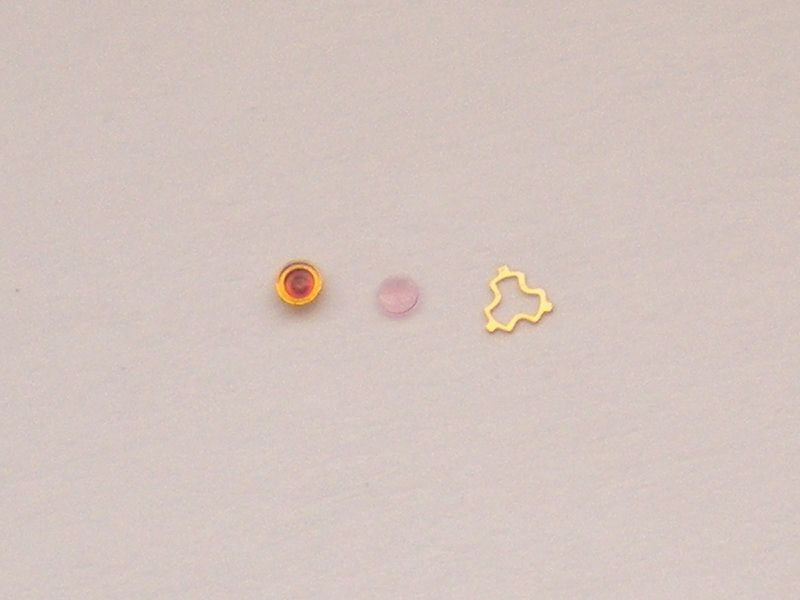
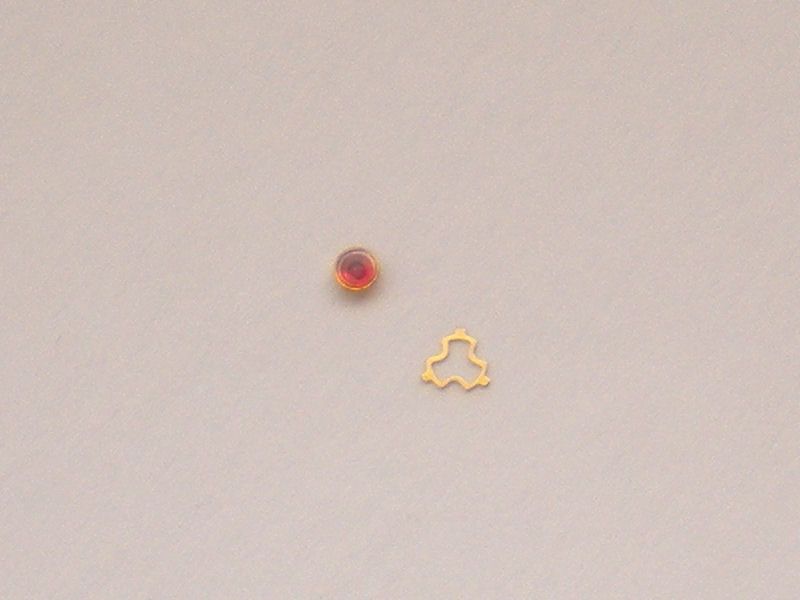
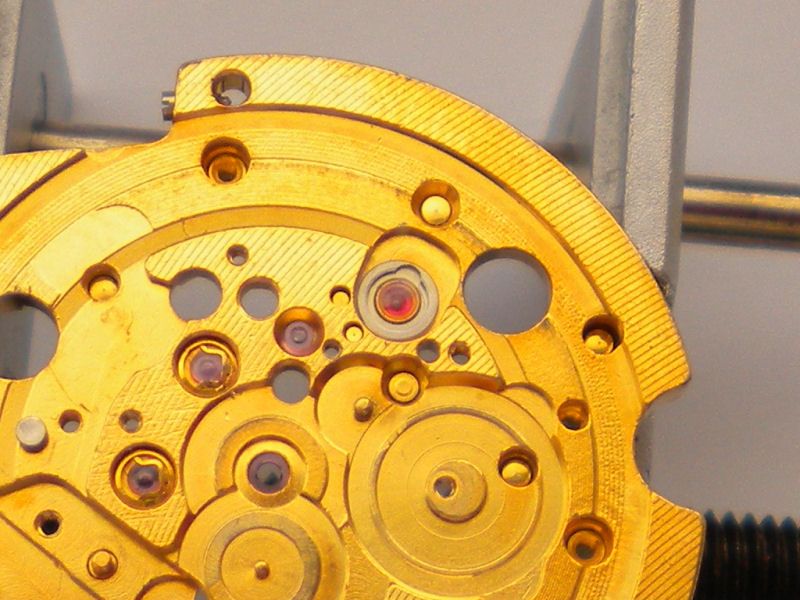

 Reply With Quote
Reply With Quote